 Indians Archive
Indians Archive  Cleveland Sports Vault: Ray Fosse - One Tribe Fan’s Perspective
Cleveland Sports Vault: Ray Fosse - One Tribe Fan’s Perspective
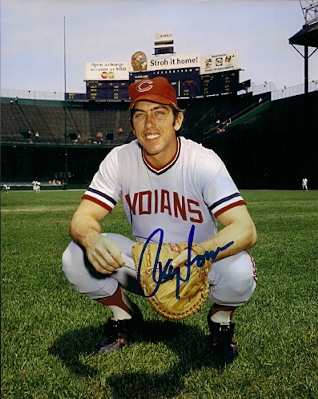 In the 1970 Major League Baseball All Star Game, Cleveland Indians rookie catcher Ray Fosse and the Cincinnati Reds’ hustling Pete Rose had a date with destiny…
In the 1970 Major League Baseball All Star Game, Cleveland Indians rookie catcher Ray Fosse and the Cincinnati Reds’ hustling Pete Rose had a date with destiny…
-Nah. To fellow Indians fans (and I am looking you squarely in the eye), my solemn vow is this: what follows will not be the typical account of Pete Rose running over Ray Fosse in the 1970 All Star game (ironically, a play featuring more body contact than can be found in an NFL Pro Bowl). A Bing search will turn up three dozen of these articles for you whenever you like. And as you are aware, they sprout anew with the backyard clover every July.
***
Raymond Earl Fosse was born April 4, 1947 in Marion, Illinois…
-Nope, not doing a Wikipedia-style piece on the guy, either. These are also everywhere. You find them scattered among the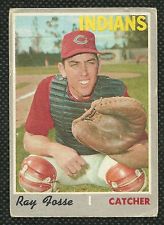 heroic tales of The Great Pete Rose starring in the 1970 All Star Game, like crabgrass amidst the clover.
heroic tales of The Great Pete Rose starring in the 1970 All Star Game, like crabgrass amidst the clover.
***
A key member of the 1972-’73 World Champion Oakland Athletics, Ray Fosse…
-No. That is noteworthy, but we are Cleveland. There will be no emphasis on 1970s baseball team season accomplishments around here, mister. These articles pop up occasionally, like the stray oak or maple sprouts you suddenly notice growing out near the fence, on the bare patch by the compost pile. (Pull those. They only seem worthy of attention.)
***
Most of the patrons attending Jacobs Field that day appeared to meander aimlessly about. It was the summer of 1994, the ballpark’s inaugural season, and we all were processing the beauty of the place. “I can’t believe this is in Cleveland…”
It was my first pilgrimage to the new park. As with any watershed moment, it doesn’t seem as long ago as the period immediately preceding it. ’94 seems like five years ago, while the Indians games I attended at Municipal Stadium in 1993 seem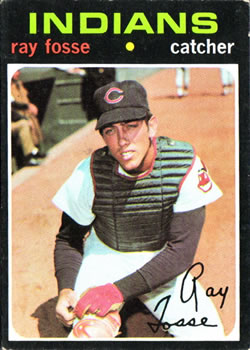 much further in the past.
much further in the past.
When our group settled into our seats, my mother got the attention of my brother Roger and me. She’d bought a ticket for us to “announce” an inning of the game. It would be recorded for us, on an audiocassette. At a certain point in the game vs. the Oakland A’s, we were to report to an usher, and receive an escort to a booth behind the plate.
The trip to the booth alone was compelling, compared to what we were used to. I particularly recall looking down on the interior bar area as we approached.
The window of the announcer booth was incredibly close to home plate. On the table were sheets full of statistics that were available to the guest ‘announcers’. Roger and I made no pretense that we were actually calling play-by-play; I guess we were both ‘color-analysts’. More like unapologetic, unashamed homers – these Indians were good, a lineup of mashers with speed and swagger. Why would we want to dampen that?
As we took our seats, we continued to look around. The wall to the adjacent booth was clear Plexiglas, and there obviously were some legitimate radio guys there. I did a double-take – the quick, casual smile was familiar. Wasn’t that Ray Fosse? Yeah… he played for Oakland some. He must be an A’s announcer…
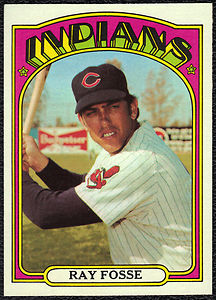 Before “The Collision” (as it would have been labeled had it occurred in the 1980s or later), Ray Fosse’s MLB comparison was Reds catcher Johnny Bench. In other words, his projected ceiling could not have been higher. Fosse had not been directly scouted by the Indians when he graduated from high school, so he was surprised when they selected him with their first pick (number 7 overall) in the 1965 draft. (This was the first ever amateur draft.) Houston Astros scouts had paid him the most visits, but the Tribe was a subscriber to a scouting service that recommended Fosse.
Before “The Collision” (as it would have been labeled had it occurred in the 1980s or later), Ray Fosse’s MLB comparison was Reds catcher Johnny Bench. In other words, his projected ceiling could not have been higher. Fosse had not been directly scouted by the Indians when he graduated from high school, so he was surprised when they selected him with their first pick (number 7 overall) in the 1965 draft. (This was the first ever amateur draft.) Houston Astros scouts had paid him the most visits, but the Tribe was a subscriber to a scouting service that recommended Fosse.
From the end of 1965 through 1967, Fosse rose through the minor leagues, never shedding his “can’t miss” label. He debuted with the big league Tribe in September of 1967, collecting his first and only major league hit of the year. He spent the 1968 season back in Portland, where he starred along with fellow prospect Lou Piniella. 1969 saw Fosse, Duke Sims, Kenny Suarez and holdover Joe Azcue battling for playing time. Just as the season began, however, Azcue was traded to the Boston Red Sox in the deal that brought flashy OF/1B Ken “Hawk” Harrelson to Cleveland. Fosse, wearing number 8, backed up Sims before fracturing his right index finger. That sidelined him for much of the season. (That same injury, to the same finger, would occur at least twice more in Fosse’s career.) In 1970, Sims and Fosse began the season in a platoon. By the end of April, Fosse seized the full-time catcher role.
In the spring of 1970, the Indians would stumble out of the gate. But first baseman Tony Horton, third baseman Graig Nettles and catcher Ray Fosse flashed the promise of the core of a contender. I found a game, on May 21, in which all three of them played a part in an offensive explosion. Journeyman Bob Miller was the Tribe’s starting pitcher, and he was going up against the Boston Red Sox of Carl Yastrzemski (the 1967 AL Triple Crown winner), Tony Conigliaro, Rico Petrocelli and Reggie Smith. Pitching for Boston was the flaky lefty, and future Cleveland basher, Bill “Spaceman” Lee.
Top of the 1st: Miller worked out of trouble, as CF Reggie Smith hit a one-out, ground-rule double and LF Yaz walked. RF “Tony C” took a called third strike, before the 3B Petrocelli popped out to Horton at first.
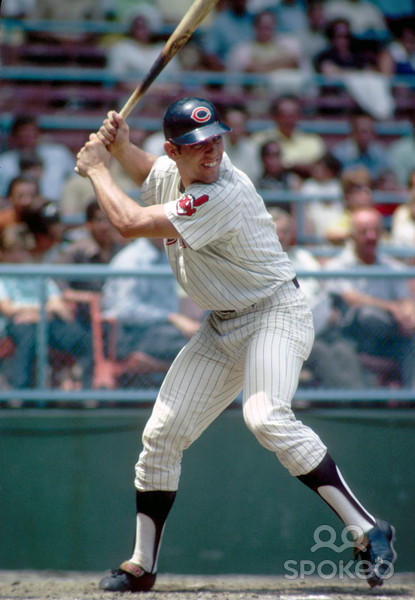 Bottom of the 1st: Tribe CF Ted Uhlaender and 2B Eddie Leon grounded out to second and to short. Solid veteran RF Vada Pinson singled past short. Horton singled to center, moving Pinson to second. Fosse also singled to center, plating Pinson. After 1, 1-0 Tribe.
Bottom of the 1st: Tribe CF Ted Uhlaender and 2B Eddie Leon grounded out to second and to short. Solid veteran RF Vada Pinson singled past short. Horton singled to center, moving Pinson to second. Fosse also singled to center, plating Pinson. After 1, 1-0 Tribe.
The Red Sox went quietly in the 2nd. In the bottom of the inning, the Indians threatened as SS Jacke Heidemann doubled to right and Miller walked. They were stranded.
Moving to the 4th, Miller walked Yaz, leading off. Tony C’s single to left put runners on the corners. Miller induced Petrocelli to ground into a double play, with Yaz scoring.
The Indians could not muster a response in their half of the inning. After 4, 1-1 Tie.
Fast forward to the bottom of the 5th. Facing the Indians was Vicente Romo, whom had been traded to these Red Sox by the Indians the previous year in the Harrelson deal. (Harrelson was now on the injured list.)
Romo walked Uhlaender (never a sound move, but especially leading off an inning). Leon bunted to the pitcher, advancing the runner. Romo issued the intentional free pass to Pinson, and then walked Horton. Ray Fosse up. GRAND SLAM! (Fosse may have won some 1970 All Star votes, right here). After Ray Jarvis was brought on to replace Lee, Nettles jacked one out as well. In fact, the Indians score three more runs after that. Ken Brett (Hall of Famer George’s brother) was brought on to retire Pinson for the final out. (Imagine if Leon hadn’t bunted away the first out of the inning. Also, I wonder how often a hitter who sacrifices also hits an RBI double in the same inning- which he did.) After 5, 10-1 Tribe.
The Tribe’s Dennis Higgins walked Yaz to lead off the 6th, and with two outs, yielded a home run to slugging 1B George Scott. After that, Higgins loaded the bases on two singles and a walk to the pitcher.
Vince Colbert was called upon to get the last out. Instead, two wild pitches, a single, and a walk later, Indians manager Al Dark lifted him as well.
On came veteran pitcher Dick Ellsworth (acquired from Boston in that Harrelson deal). He retired Yaz on a liner to right. Middle of 6, 10-6 Tribe.
Boston tacked on a run in the 8th, but that was pretty much all she wrote. The Cleveland Indians won, 10-7 to win their thirteenth of thirty three games. Ray Fosse finished 2 for 4, with a walk and 2 runs scored. He drove in 5 runs, and his grand slam was his second home run of the season.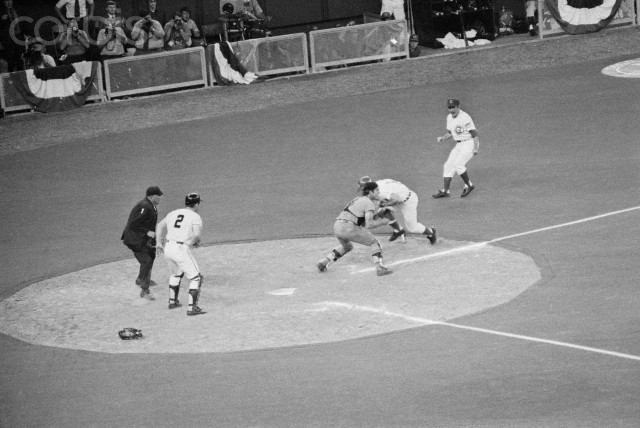
Ray Fosse was named to the American League All Star team by Oriole manager Earl Weaver, as the backup to the Tigers’ Bill Freehan. By the break, he’d hit .313 with 16 home runs and 45 RBI. He’d hit in 23 straight games as well, which represented the longest streak in that league in 9 seasons.
Fosse entered the All Star game in the 5th inning. In the 6th, he singled to right, and was bunted over to second by McDowell. Yaz drove him in for the game’s first run. The National League would score three times in the bottom of the ninth to tie the game and send it into extra innings.
You probably know what happened in the bottom of the 12th. The Chicago Cubs’ Jim Hickman singled with Pete Rose at second base. Rose sprinted (he always sprinted) around third, and coach Leo Durocher was sending him home. CF Amos Otis of the Kansas City Royals sent a strong throw home, and it was coming in a couple steps up the third base line. Ray Fosse stood there for the throw, and just as it arrived, Rose barreled into him and scored. Fosse went tumbling, and his glove and the ball were separated. The National League won, to the Cincinnati crowd’s glee.
These days, Fosse would have received an MRI of his shoulder, in addition to the X-ray that was taken at a Cincinnati hospital. The X-ray did not show any damage, but that was only due to the inflammation that obscured the fracture. Much later, a second X-ray revealed the problem, but the bone had partially healed incorrectly and needed to be broken again and reset.
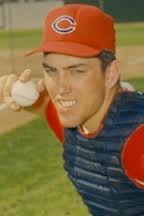 Even though he could not lift his arm after the All Star contest, Fosse started the next game, in Kansas City. He wasn’t going to ask out of the lineup, and Dark wasn’t going to ask him if he was hurt. Fosse did hit close to .300 in the second half of the season, but his home run production was reduced to almost nothing. It was amazing that he actually hit two homers with a broken shoulder.
Even though he could not lift his arm after the All Star contest, Fosse started the next game, in Kansas City. He wasn’t going to ask out of the lineup, and Dark wasn’t going to ask him if he was hurt. Fosse did hit close to .300 in the second half of the season, but his home run production was reduced to almost nothing. It was amazing that he actually hit two homers with a broken shoulder.
Unsurprisingly, Pete Rose has spoken about the collision dozens of times. He points out that while Fosse did not miss any playing time, he missed three games due to a bruised knee. Rose said he tried to avoid hitting Fosse; he also said if he didn’t run into him, he’d never be able to face his father. These days, Fosse seems to have a bit of a chip on his shoulder over feeling as though it was intentional. As for the talkative Rose, the phrase that comes to mind is, "Methinks he dost protest too much."
Ray Fosse was an effective catcher for several seasons after 1970. Maybe not Johnny Bench-quality, but still. Unfortunately, his list of injuries suffered began to grow, putting him out of action for stretches and hindering his production.
He did make the All Star game again, in 1971 (along with winning his second Gold Glove). He received a lot of credit from Indians ace Gaylord Perry in 1972, when Perry won the Cy Young Award on the strength of a 24-16 record with a 1.92 ERA.
Fosse was traded by the Indians in 1973, with Jack Heidemann, to Oakland for OF George Hendrick and C Dave Duncan. He won a couple rings there, and suffered a few more injuries (including a vertebrae fracture sustained when he broke up a fight between Reggie Jackson and Bill North). In 1976, he returned to the Indians. Once fellow catcher Alan Ashby was traded to Toronto in 1977, Fosse became the regular Tribe catcher again. That was the year he caught 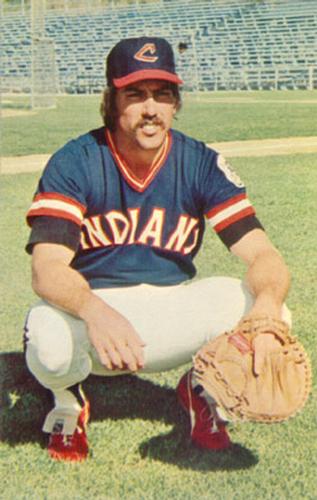 Dennis Eckersley’s no-hitter. When manager Frank Robinson was fired, Fosse was traded to the expansion Seattle Mariners and wound his career down there.
Dennis Eckersley’s no-hitter. When manager Frank Robinson was fired, Fosse was traded to the expansion Seattle Mariners and wound his career down there.
Tony Horton waged a battle with anxiety issues, and soon retired. Graig Nettles was traded to the New York Yankees to make room at third base for the young Buddy Bell. Apparently, there was no room (or rather, money) for too many good ballplayers on those early 1970s Indians teams.
Ray Fosse has returned to Cleveland multiple times every season, as a radio broadcaster for the A’s. Tribe fans’ memory of his promise, and his effort, are a constant. As is the chronic pain in his shoulder.
***Hey, follow me on Twitter! http://twitter.com/googleeph2 #thanks
Sources included baseball-reference.com; http://reds.enquirer.com/1998/06/060598fosse.html; http://sabr.org/bioproj/person/b8e6733a; Wikipedia; Tribe All-Star Moments: Ray Fosse, 1970 by Ryan @ LetsGoTribe on July 6,2011; All Star Game Memories: Rose Vs. Fosse, http://www.foxsportsohio.com/06/27/12/All-Star-Game-memories-Rose-vs-Fosse/landing_reds.html?blockID=752494; The Curse of Rocky Colavito, Terry Pluto; Bowled Over/A Collision with Pete Rose in the 1970 All Star Game Changed Ray Fosse’s Career, Ron Kroichick, San Francisco Chronicle.
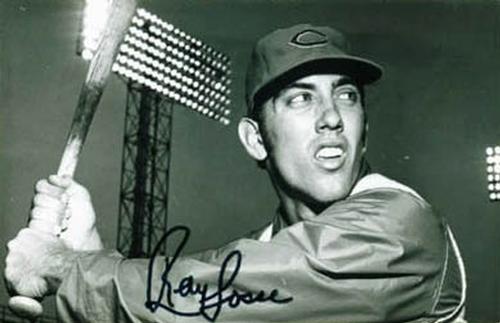
- NBA Announces 2013-2014 Schedule
- Browns Ink Sharknado
- Sharknado A No-Show For Rookie Camp
- Trent Richardson Out Until Training Camp
- Browns Sign Brandon Jackson
- Carrasco Suspended Eight Games
- Browns Add to Wide Receiver Depth with David Nelson
- Browns Need to Learn from Past Draft Mistakes
- Browns Release Chris Gocong and Usama Young
- Browns Missing on Grimes Disappointing, But Not The End
The TCF Forums
- Chris Grant's first 3 drafts
Kingpin74 (Tuesday, January 21 2014 10:13 AM) - The 2014 Offseason Thread
googleeph2 (Tuesday, January 21 2014 9:36 AM) - 2015 Recruiting
furls (Tuesday, January 21 2014 6:57 AM) - Mike Brown
YahooFanChicago (Monday, January 20 2014 11:15 PM) - Movies coming out
HoodooMan (Monday, January 20 2014 9:34 PM) - 2014 Hoops Hockey Hijinx
jpd1224 (Monday, January 20 2014 4:44 PM) - 2014 Recruiting
jclvd_23 (Monday, January 20 2014 2:26 PM) - Wish List - #4 Pick
Hikohadon (Monday, January 20 2014 1:26 PM) - Official- Browns Coach Search/Rumors
OldDawg (Sunday, January 19 2014 6:48 PM) - #1 overall pick Anthony Bennett
TouchEmAllTime (Sunday, January 19 2014 1:28 PM)


